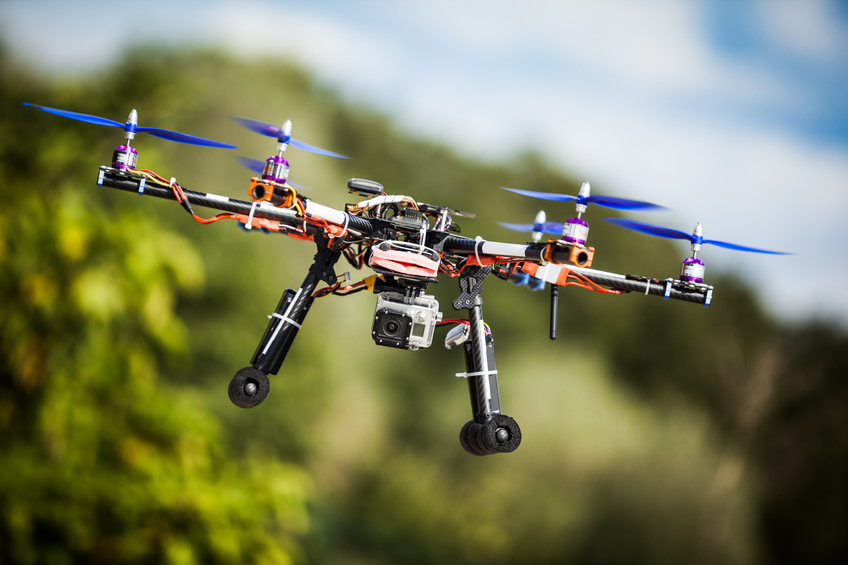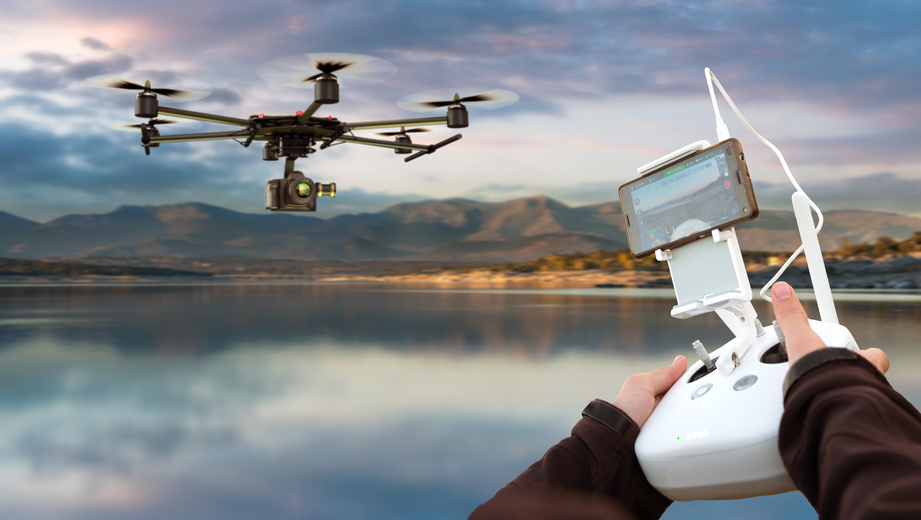The use of unmanned aircraft systems (UAS or "drones") byindividuals and industry continues to grow.
|According to the Federal Aviation Administration (FAA) drone sales are expected to grow from 2.5million units in 2016 to 7 million in 2020. PWC Global has calculated that the overallemerging global market for business services using unmanned aircraft isover $127 billion. The impact on the insurance industry is expectedto be $6.8 billion.
|Insurance companies, quick to recognize this potential impact,have taken their first tentative steps toward droneimplementation.
|Efficiency of performing inspections
This initial enthusiasm is understandable. A 2014 J.D. Powerstudy found that the length of time spent in each stage ofprocessing a homeowner's claim (cycle time) was the single mostimportant metric that drove customers to stay with their existingcarrier or seek a new one. Drone use has the potential to reducethe time to inspect a loss and allow more inspections per day aftera major event. This directly impacts the speed with which customersare able to receive settlements.
|The efficiency of performing inspections with drones may also lead to entirely new practicesthat can help insurers with calculating premiums and riskmitigation. Drones make it possible to preemptively inspect insuredproperties before a hurricane or at the start of hail season.Similarly, this technology makes it possible to conduct moredetailed and accurate underwriting on large-scale properties.
|Drone-related claims likely to increase
Many other industries also use drones, which are deployed byconstruction companies, utilities, agribusiness, videographers andsurveyors to name a few. As more companies and individuals flydrones, the risks will increase and, consequently, the likelihoodof insurance claims.
|This article is divided into three broad categories ofdrone-related risks: legal risk, reputational or brand risk, andrisk to people and property. Each risk must be viewed differentlydepending on whether the drone is being operated by an insurancecompany or another entity.
|Related: Terror risk from small domestic drones has U.Sofficials worried
||
(Photo: iStock)
|Legal risk
Most discussions of legal risk have focused on compliance with FAA regulations. While theseregulations are certainly important, drone operators must also beaware of local, state and federal laws that may directly orindirectly impact the use of drones. These may include lawslimiting where drones may be flown as well as laws addressingprivacy, trespass and reckless endangerment.
|Legal compliance is generally cited by insurance company leadersas their number one concern with integrating drones into theirbusiness practice. Unlawful use exposes companies and employees tocivil and criminal liability, including fines and adverse courtawards or high settlements. The rapidly changing legal environmentand the patchwork of state and federal laws can overwhelm all butthe most sophisticated in-house legal departments. Nevertheless,insurance companies are moving forward with drone use if for noother reason than to avoid being left behind by theircompetitors.
|One of the most common ways for insurance companies to addresslegal risk is to outsource their drone operations in whole or inpart. This approach may distance the company from legal complianceissues while offering the advantage of reduced start-up costs fortraining pilots and purchasing aircraft.
|Relying on contractors
Companies should use caution, however, when relying oncontractors to provide drone services. The use of a contractor doesnot relieve the insurer of the requirement to take reasonablemeasures to ensure that its agent is operating within the law. Inthe event of an accident, any potential claimant will surely seekrelief from both the insurance company and the contracted pilot. Ifthe contractor was operating unlawfully, its insurance carrier isunlikely to defend the claim. If the contracting insurance companywas willfully blind to this violation, it may find itself in theposition of the only "deep-pocket" defendant trying to explain itsactions.
|Before relying on another organization to fly on behalf of theinsurance company, the insurance company must develop and implementa vetting and oversight program. This involves more than checkingto see whether a pilot is licensed. The FAA does not requirelicense holders to demonstrate any practical flying skill.
|Related: Don't shoot that drone!
|Prior to contracting with a pilot, insurance companies shouldinsist on some verification of experience, knowledge of applicablelaws and regulations, and a plan for complying with thoserequirements. The insurance company will likely want to draft aservices contract that incorporates these elements and, perhaps,adds additional elements such as procedures to ensure that thepilot is being a "good-neighbor" by coordinating with adjacentproperty owners or providing advanced notice of flights.
|Working knowledge of laws
Whether using in-house pilots or contracted pilots, everyinsurance company should have a working knowledge of local, stateand federal law. The majority of states now have laws limitingwhere and how drones can fly. These requirements overlap with theFAA regulations governing airspace and operation. While mostinsurance companies are aware of these requirements, many companiesfail to account for laws that are not specific to drones.
|Every drone program must have policies and procedures to ensurethat the flights do not commit trespass, do not violate personalprivacy rights and do not endanger the public. This can best bedone through the development of a comprehensive drone operationsmanual that is used internally and can serve as the basis foroverseeing outside contractors.
|As more individuals and corporations use drones for fun andprofit, there will be more drone-related claims. The first questionafter an incident is going to be whether there is an applicablepolicy. As a general rule, commercial drone operations are coveredonly by specially written policies, not by general liabilitypolicies.
|Even when there is an applicable policy, if an insured is usingthe drone in violation of law, the claim will likely not becovered. Personal use is less clear. Some homeowners' policies orpersonal umbrella policies may cover hobby use, while others willexclude such use as constituting aircraft operations. Again, theinsurance company must fully understand the applicable law todetermine whether there is coverage.
|
(Photo: iStock)
|Reputational or brand risk
This is frequently overlooked, but is critically important toestablished insurance companies. People often have a visceralnegative reaction to drones. A poorly implemented drone program cananger customers and the public, thereby tarnishing a well-earnedreputation and impacting revenue. At the extreme, angry homeownershave been known to shoot down drones.
|The best way to mitigate this risk is to create a transparentand respectful program, and require contractors to do the same.This usually includes several steps. First, pilots should provideadvance notification of flights to the property owner and toneighboring properties. This avoids any problems with people beingsurprised by an unexpected drone. Second, operators should eitheravoid flying over private property without permission or, at leastadvise property owners of their intent to do so. Third, every droneprogram should incorporate a data retention and privacy policy thatis available to the public and strictly enforced.
|The same steps that insurance companies take to minimizereputational and brand risk can help to reduce the risks that maylead to claims. For example, unintentional or uninvited flightincreases the chances of liability claims and may void insurancecoverage by constituting an unlawful act under the applicablepolicy. Also, accidents are much more likely when a drone isoperated in close proximity to a structure or people, or flown inan unfamiliar environment. Insurance companies might considerwhether to require a degree of customer education as a conditionfor writing drone policies or in exchange for a policydiscount.
|Risk of damage or injury
Drones have the potential to cause grievous bodily injury or, inthe worst possible scenario, cause a mass casualty event such as anairline crash. The best way to mitigate this risk when drones areused or contracted by insurance professionals is through thedevelopment and implementation of safety-driven policies andprocedures. The policies will ensure that safety measures areemployed on a consistent and uniform basis and can serve as animportant defense tool in the event that litigation arises from anadverse event.
|The policies should include requirements for operator training,recurrent pilot proficiency examinations, vetting and auditing,equipment inspection and maintenance, and detailed record keeping.If an outside vendor is used for drone services, the vendor shouldbe required to demonstrate a similar program.
|When an insured either causes damage or is damaged by a drone,the claim should be evaluated in light of applicable policylanguage and whether the drone was being operated in a reasonablemanner in light of all existing laws and regulations. This is adaunting task given how quickly the law and technology arechanging. Needless to say, it is difficult in the currentenvironment to assess the risk involved with underwriting a policy,settling a claim or defending an insured. The best approach tomitigating this risk is to stay abreast of legal developments andto seek expert advice early and often.
|Related: If you invade someone's privacy with a drone, yourinsurance might not cover it
|James Mackler, ([email protected]) is a memberof the law firm Frost Brown Todd LLC and founder of their UnmannedAircraft Systems practice. He advises the insurance industry andother businesses on the laws impacting the use and management ofthese systems. He holds a commercial helicopter pilot certificateand is a former military aviator who served eight years of activeduty in the U.S. Army.
|Learn more about insurers that are using drones at theAmerica's Claims Event in Charlotte, N.C., June20-22.
Want to continue reading?
Become a Free PropertyCasualty360 Digital Reader
Your access to unlimited PropertyCasualty360 content isn’t changing.
Once you are an ALM digital member, you’ll receive:
- All PropertyCasualty360.com news coverage, best practices, and in-depth analysis.
- Educational webcasts, resources from industry leaders, and informative newsletters.
- Other award-winning websites including BenefitsPRO.com and ThinkAdvisor.com.
Already have an account? Sign In


